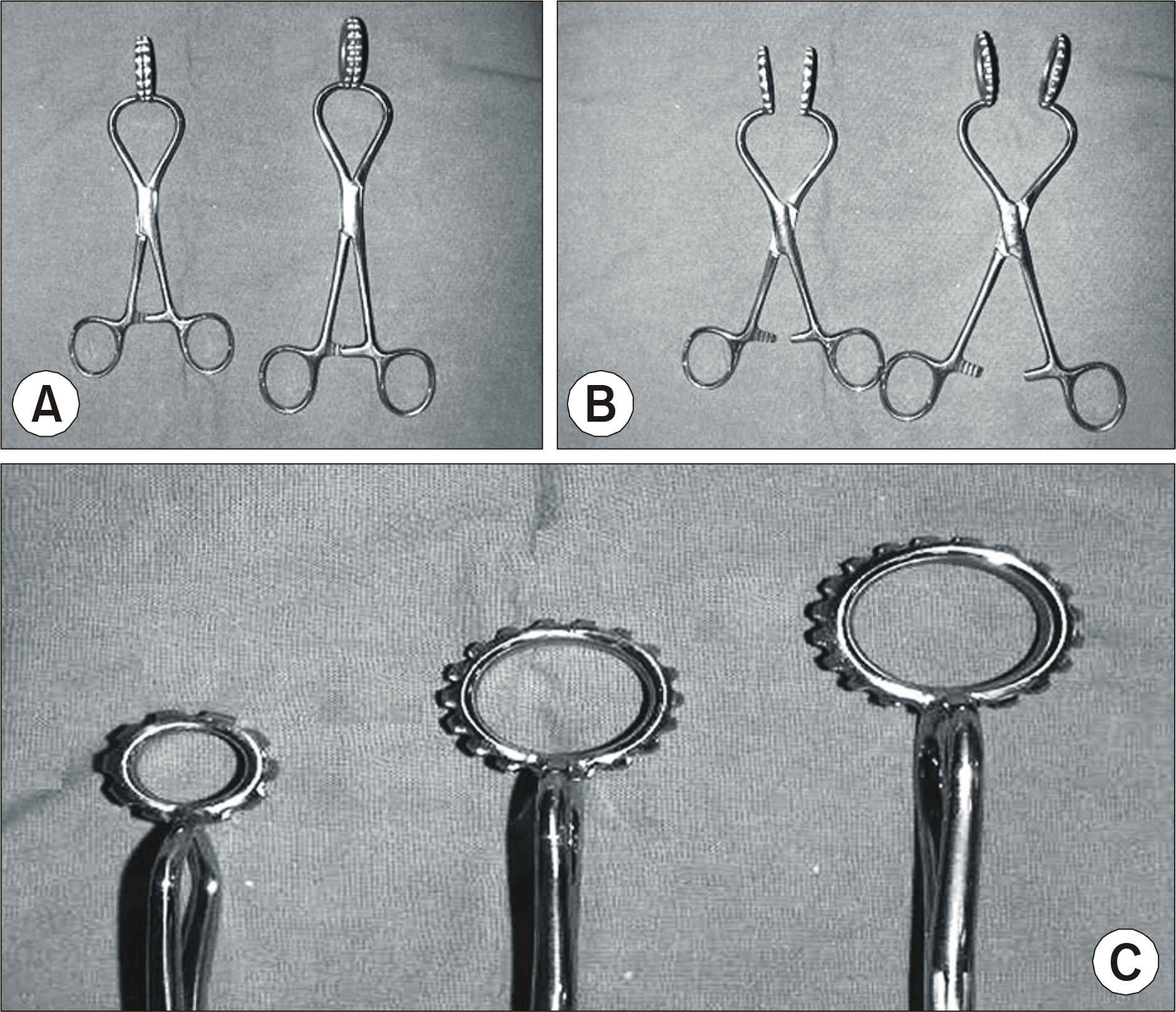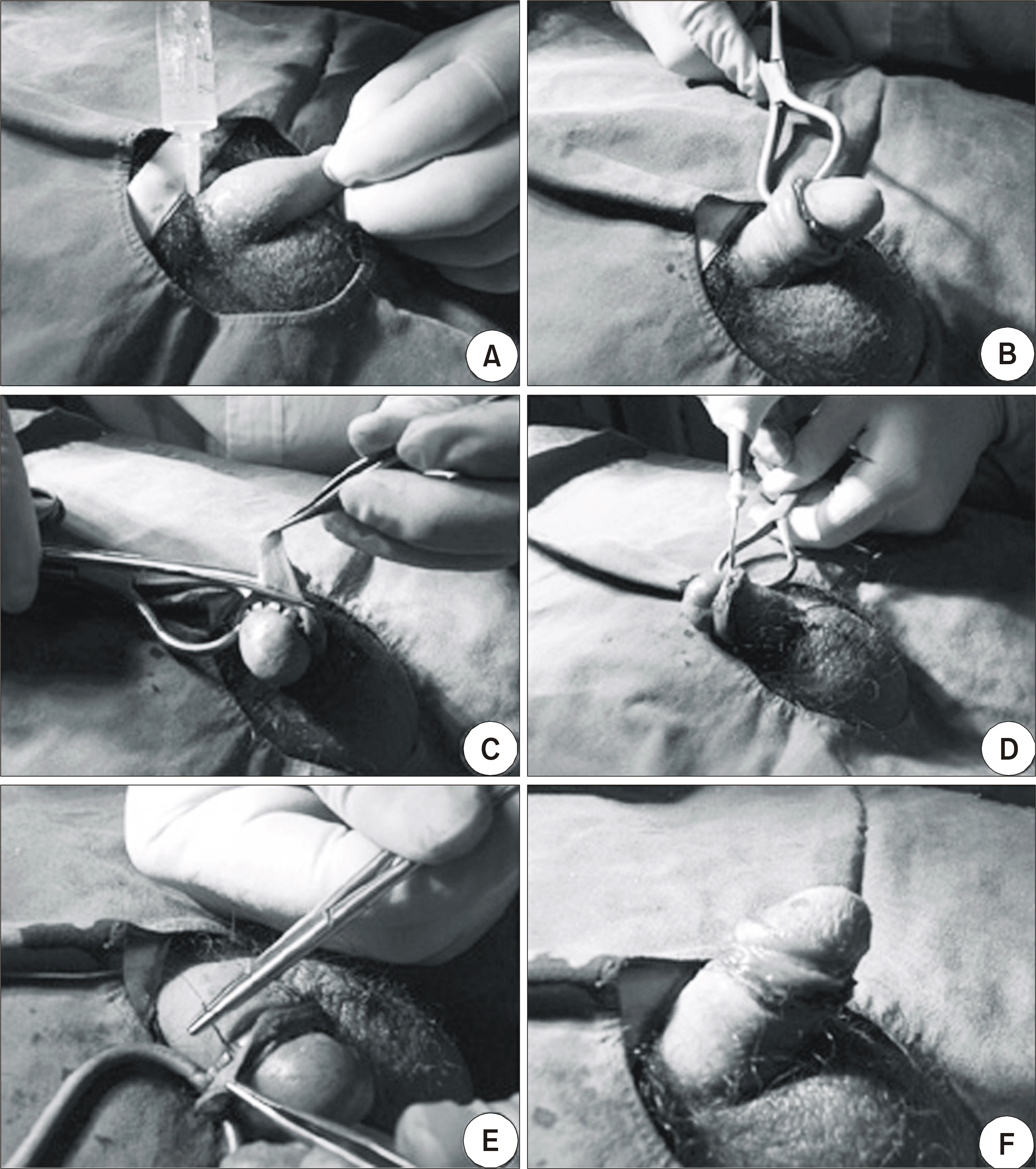Korean J Urol.
2006 Oct;47(10):1099-1102. 10.4111/kju.2006.47.10.1099.
A New Convenient Device of Circumcision
- Affiliations
-
- 1Department of Urology, Yonsei University Wonju College of Medicine, Wonju, Korea. jmsong@yonsei.ac.kr
- 2Lee Sang Bong Urology and Dermatology Clinic, Wonju, Korea.
- KMID: 2139812
- DOI: http://doi.org/10.4111/kju.2006.47.10.1099
Abstract
-
PURPOSE: Circumcision is widely practiced in Korea. Circumcision has been popularly performed with mechanical devices such as the Gomco clamp, the Plastibell device and other modified devices. We investigate the effect of using a new device (the circumcision clamp).
MATERIALS AND METHODS
We conducted a retrospective study between December 2003 and February 2004 on 75 patients who wanted circumcision. 25 patients were operated on by performing conventional circumcision, and 50 patients were operated on by using the circumcision clamp.
RESULTS
The mean operation time for the new device group was shorter than that for the conventional circumcision group (p<0.05). No significant difference of complications was noted between the conventional circumcision group and the circumcision clamp group.
CONCLUSIONS
The new method with using the circumcision clamp has a benefit as it is designed to expose the glans and it saves operating time.
Keyword
Figure
Reference
-
1.Pang MG., Kim DS. Extraordinarily high rates of male circumcision in South Korea: history and underlying causes. BJU Int. 2002. 89:48–54.
Article2.Kim TH., Oh SJ., Choi H. Knowledge and attitude toward circumcision in Korean: a questionnaire study for adult males stratified by age. Korean J Urol. 2002. 43:786–94.3.Ryu SB., Kim KW., Kang TW., Min KD., Kwon DD., Oh BR. Study on consciousness of Korean adults for circumcision. Korean J Urol. 2003. 44:561–9.4.Lee JS., Kim KW., Ryu SB. What are doctors' clinical opinions regarding circumcision? Korean J Urol. 2006. 47:91–6.
Article5.Moses S., Bailey RC., Ronald AR. Male circumcision: assessment of health benefits and risks. Sex Transm Infect. 1998. 74:368–73.
Article6.American Academy of Pediatrics., task force on circumcision. Circumcision policy statement. Pediatrics. 1999. 103:686–93.7.To T., Agha M., Dick PT., Feldman W. Cohort study on circumcision of newborn boys and subsequent risk of urinary tract infection. Lancet. 1998. 352:1813–6.8.Bailey RC., Plummer FA., Moses S. Male circumcision and HIV prevention: current knowledge and future research directions. Lancet Infect Dis. 2001. 1:223–31.
Article9.Gee WF., Ansell JS. Neonatal circumcision: a ten-year overview widi comparison of the Gomco clamp and the Plastibell device. Pediatrics. 1976. 58:824–7.10.Sunwoo HS., Koh SK. A convenient device of circumcision. Korean J Urol. 1982. 23:106–8.
- Full Text Links
- Actions
-
Cited
- CITED
-
- Close
- Share
- Similar articles
-
- Complication of Circumcision Performed with Mechanical Self-Circumcision Device: A Case Report
- A Convenient Device of Circumcision
- Strangulation of the Penis by Self-circumcision Device: A Case Report
- Excessive Penile Skin Necrosis After Use of Medically Unapproved Circumcision Device: Case Report
- Infant with swollen penis and apparent dysuria



